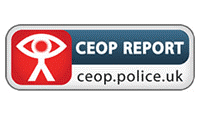Facebook Resists CEOP Panic Button

CEOP understands child protection, we know web design, says Facebook
Following pressure from UK politicians, Facebook has agreed to forward reports of abuse directly to the UK agency CEOP, but has stopped short of installing a CEOP “panic button” on all its pages.
Following a meeting with CEOP representatives in Washington, Facebook has announced a 24-hour police hotline, which will pass UK reports to the UK-based CEOP (Child Exploitation and Online Protection) Centre, and a £5 million education and awareness programme. However, the social networking site has stood firm against CEOP’s request that it adds the CEOP panic button to all pages.
Web design versus child protection
Facebook is also pushing back against Government with a counter-demand – requesting that the UK government open up to Facebook and sharing strategic data on offenders with the site. A parallel programme in the US already gives Facebook access to that data there.
Charities and members of the UK government called for Facebook to add the panic button to its site, after serial rapist Peter Chapmanposed as a young boy on the site and murdered 17-year-old Ashleigh Hall. Facebook had meetings with Home Secretary Alan Johnson, and was urged by other politicians including Harriet Harman, to add the CEOP button.
The button had been promoted in February as part of a government campagin for child safety online, but Facebook has argued that its existing policies work well, and that its own tests have shown that this kind of button actually reduces the reporting of abuse, and agreed to put the CEOP link on its existing reporting pages, arguing this would be more effective.
CEOP button is a deterrent?
 CEOP’s chief executive Jim Gamble said Facebook did not understand the value of deterrents, “It’s like putting a burglar alarm inside the house,” he said on the BBC’s Today programme.
CEOP’s chief executive Jim Gamble said Facebook did not understand the value of deterrents, “It’s like putting a burglar alarm inside the house,” he said on the BBC’s Today programme.
“We have a reporting link on all our pages, and we are enhancing that by ensuring it goes straight to CEOP,” said Richard Allen, Facebook’s head of policy in Europe, on the programme. As soon as a user reports abuse, they are offered a link to CEOP he said: “It’s right there in your face.”
Facebookspokespeople facing the media boiled the issue down to web design versus child protection. While Gamble wants a big button on the site, Facebook argues that it knows best what works.”We know about web design and Ceop knows about child protection,” a spokesman told the Guardian. “We want to marry those skills – not argue about web design.”